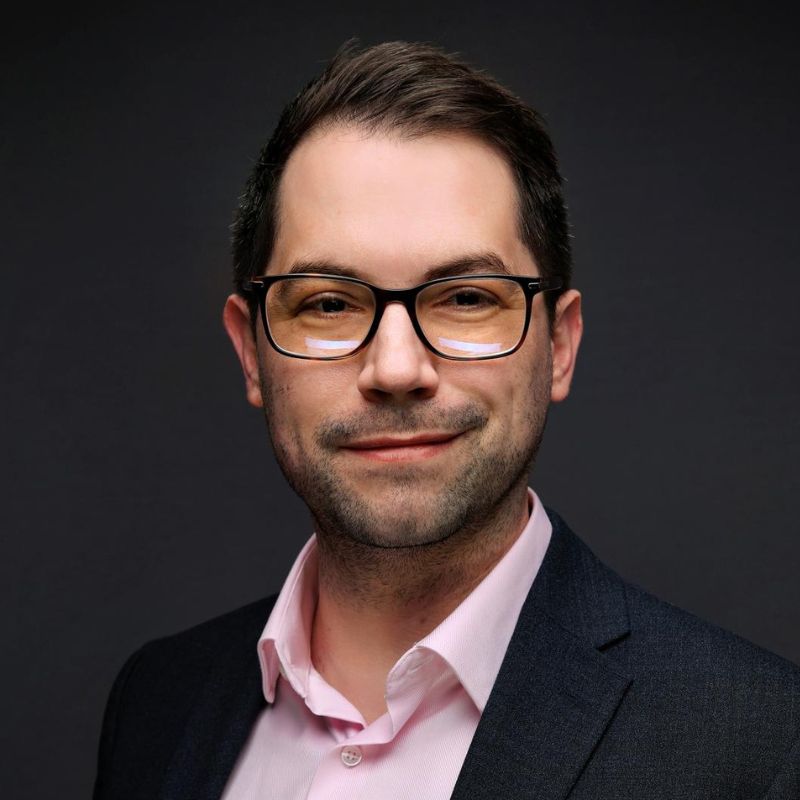Peter Hinssen: “AI is both immense and insignificant at the same time”
Ahead of his keynote address at this year’s UNLEASH World event, Peter Hinssen details why he believes AI will be the driving force behind the workforce of the future, and how HR can be the ones in the driving seat for the long-term.
Path to Paris | UNLEASH World Speaker
As the use of AI tools grows in prevalence and sophistication, the human element of work will become a more defining factor for HR and organizations.
UNLEASH sat down for an exclusive interview with Hinssen ahead of his keynote sessions in Paris next month to delve into what he believes the future holds for HR when it comes to AI.
Find out why greater adoption will be the “end of awful” and what “unholy alliance” could be the key to cementing HR’s position as leaders on all things AI.
Employers and employees alike are still exploring the shallows of AI possibilities before diving into the deeper waters – but make no mistake, the difference between the two comes around quicker than you expect.
In terms of the S-Curve model of technology innovation, AI is currently at the start of the upward swing – the base of the S. For now, at least.
Speaking to UNLEASH before his keynote address at this year’s UNLEASH World event in Paris, Peter Hinssen, keynote speaker, author and innovation, technology and leadership expert, explains that while the S-Curve is becoming more condensed – innovation occurring in shorter time frames with more users – the human element is far more linear.
“If you look at productivity increases in the next 18 months – forget it, that’s not going to happen,” he says.
“But if you look at fundamental shifts on how we work over the next five to 10 years, I think it’s going to be massive. AI is both immense and insignificant at the same time”
Hinssen explains that data science has been surpassed by what he terms as “content science”, which is not about numbers, but information – “it’s about what we create.”

Peter Hinssen, founder of Nexxworks
AI and the ‘end of awful’
As AI advances and evolves, a willingness to engage will also shift – meaning the human element of work will “become more important than ever before.”
Part of the problem facing employers at the moment is a lack of expertise in generating output from content science.
While companies have teams of data scientists and engineers, there may be a need for “Conan the Librarians” to “understand how to leverage that content “to do something with that: that is crucial.”
“So in the S-Curve now, we’re in the beginning. We’re overhyping but don’t underestimate long term, it’s going to be huge and insignificant depending on the timing.”
Thinking about the use of AI in this context, for example ChatGPT and other generative AI tools to write or produce content, he says work output on the lower end of the quality spectrum will soon be a thing of the past.
An example of this are AI assistants that prompt users to edit and improve work – even basic communications such as emails – before sharing or submitting.
“I call this the end of awful. But it doesn’t mean that it’s going to change everything,” he states.
It just means that the quality distribution of work, content and other output in organizations will fundamentally be altered by AI. When awful content disappears, mediocre content will also explode.
“But as a pathological optimist, I also believe that brilliant and hypercreative human output will keep existing, even if it might become harder to find.”
Consumerization puts users in the driving seat
Much of what AI promises revolves around increasing productivity, and Hinssen believes this is the first time in 25 years of workplace digitization where there is a “real productivity enhancement opportunity.”
The challenge for HR will be to adopt what he calls a ‘yesterwork hunter’ mentality – not simply adding new systems but making more strategic decisions about which processes to drop: “That’s what companies are really bad at.”
“It’s also going to be about the future of skills and work that we have to figure out, and that is where HR needs to play a strategic role – and they don’t,” he comments, referring to how the role of people within organizations will require strategic repurposing by HR.
They’ve been complaining about it, that they’re not having a seat at the table. But the reality is that most HR are still transactional. This is, I think, the moment they’ve been waiting for.”
However, although AI may give HR a seat at the table, it doesn’t mean they will be the ones driving increased learning and use of AI going forward.
That, Hinssen says, will come from end users who are already accustomed to a greater degree of technological sophistication at home than in the workplace.
“The consumerization of technology has been ongoing for a long time, and has meant that the power really has shifted towards the end users,” he explains.
“Somebody said: Work is the moment that you have to travel back in time between nine and five. That’s very true and I see the same happening now with AI.”
There will be no greater evidence of this, he asserts, than when younger people who are used to using AI throughout their years in the education system and at home will first enter the workplace; a scenario he calls a “****show of epic proportions”.
Creating an ‘unholy alliance’ with CIOs
In order to head off possible situations like this in the future, HR needs to figure out reskilling and retraining to fill future needs and how that works in practice.
Although conversation on this topic has been ongoing for some time, Hinssen believes action has been “stuck in first gear” and it may need HR working in tandem with another department to get it kick-started.
“The role of the CIO is, I think, core in many organizations. Companies couldn’t exist without it as data becomes more important. Now AI is just the cherry on the top,” he says.
HR has historically had “the worst tools” and been in a transactional role but collaboration with CIO is “crucial”, Hinssen states, due to crossover between the innovation, technology, skills and capabilities components that make up the future of work.
“I think if HR would be able to form an unholy alliance with the CIO, in many companies that could really, really change their name.”
Of course, there are plenty of other challenges for HR leaders to address concerning the role of AI in the workplace.
One is the “fundamental” question of ethical AI use for HR to address. Hinssen believes most employees won’t be bothered by how ethics are built into AI systems but doing nothing is not a sustainable approach.
“We’re going to have to figure this out. The technical term is called grafting, which comes from biology, where you take a tree and something else, you put it together and you create something unique,” he explains.
I think we’re going to have to graft our own intellectual property with the power of AI.”
Another consideration is the incoming EU AI Act – a piece of legislation that Hinsseen is no fan of: “The reason is very simple; we’ve made a long list of things that we don’t want.”
The outcome of focusing so heavily on banning certain parts of AI technology throughout Europe, such as facial recognition, could result in a disconnect for employees of multinational companies.
“If we talk about productivity of the workforce, it might be that international companies get into a very strange situation where some of the AI functionalities are going to be available in the US or in Asia, but not if your employee is in Europe,” he argues.
Doing more with AI the right way
No-one who has an understanding of AI expects it to change the world of work overnight. It is a long-term journey and Hinssen says some consulting firms, like McKinsey, are already on the right path.
“They took all their knowledge, put it into Cohere and generated their own version of an AI tool called Lilli,” he explains.
“They basically said, we can make our consultants 30% more productive. 30%; that is significant.”
However, he also highlighted that despite this success, it was “not easy” for McKinsey to crack the content science piece, to “harness the information and figure out how to leverage that”.
Knowledge-rich companies are now starting to understand this facet, he says, and anticipates that the finance world will be the next ones to crack it.
Although this will trickle down to all employers, Hinssen also has a warning for organizations that put in the minimum required effort.
“Hoping that just by implementing Microsoft Copilot everything is going to become 30% more productive, forget it,” he concludes.
You need to make this work, and that means that you have to understand your content landscape and understand how to make that grafting work.”
Peter Hinssen and UNLEASH World 2024
Want more insights from Hinssen on how to take advantage of the potential AI can bring to your workforce of the future?
You’re in luck! Hinssen is speaking at UNLEASH World, running from October 16-17, where the HR world meets.
“UNLEASH has an amazing atmosphere; Marc [Coleman] created something unique,” Hinssen shares.
“I remember UNLEASH when it was really HR technology, but it went from that side of things to the broader role that HR plays, which has been wonderful to observe.”
Hinssen will be taking the main stage to deliver the keynote address on October 16, Mastering Talent Dynamics in a Digital Age, exploring how to master the evolving workplace narrative, managing cultural shifts, and shaping workforce development.
“It’s always one of my favorite events in the calendar because it’s where everybody comes together. You have to be there at UNLEASH.”
It’s not too late to sign up for UNLEASH World 2024 and join us in Paris – you can book your pass here!

Senior Journalist, UNLEASH
John Brazier is an experienced and award-winning B2B journalist and editor. Prior to joining UNLEASH, John both led and wrote for a number of global and domestic financial services publications, covering markets such as asset management, trading, insurance, fintech and personal finance.
Contact Us
"*" indicates required fields
Partner with UNLEASH
"*" indicates required fields
Apply to Contribute
"*" indicates required fields
Webinar Registration
"*" indicates required fields